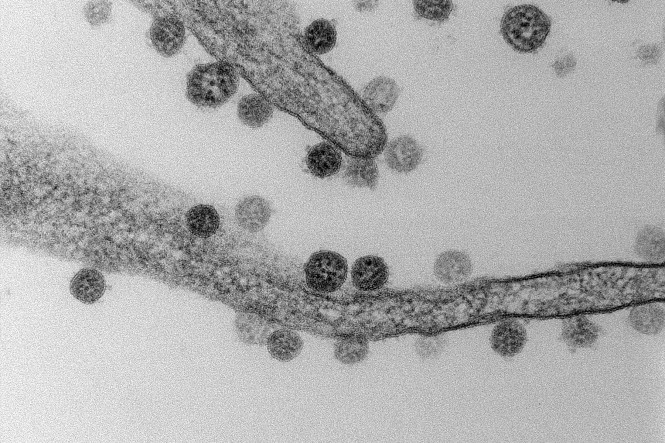The current COVID19 pandemic, resulting from the emergence a new coronavirus (severe acute respiratory syndrome coronavirus 2, SARS-CoV-2), highlights the importance of understanding the full molecular details of coronavirus infection and pathogenesis. In this study, the replication of SARS-CoV-2 in a commonly used cell culture line and its sensitivity to established antivirals was analyzed and compared to those of the closely related SARS-CoV, responsible for the 2003 outbreak. Despite their similarity, interesting differences between both viruses were revealed. Our group contributed to this study, led by the group of Prof. Eric Snijder at Medical Microbiology, with an electron microscopy characterization of the cells at different stages of infection. This produced our first images of the new coronavirus and of the large ultrastructural changes that it induces in the cell upon infection.
Natacha S Ogando, Tim J Dalebout, Jessika C Zevenhoven-Dobbe, Ronald WAL Limpens, Yvonne van der Meer, Leon Caly, Julian Druce, Jutte JC de Vries, Marjolein Kikkert, Montserrat Bárcena, Igor Sidorov, Eric J Snijder. “SARS-coronavirus-2 replication in Vero E6 cells: replication, kinetics, rapid adaptation and cytopathology” J. Gen. Virol. 2020. Online ahead of print, June 22.
